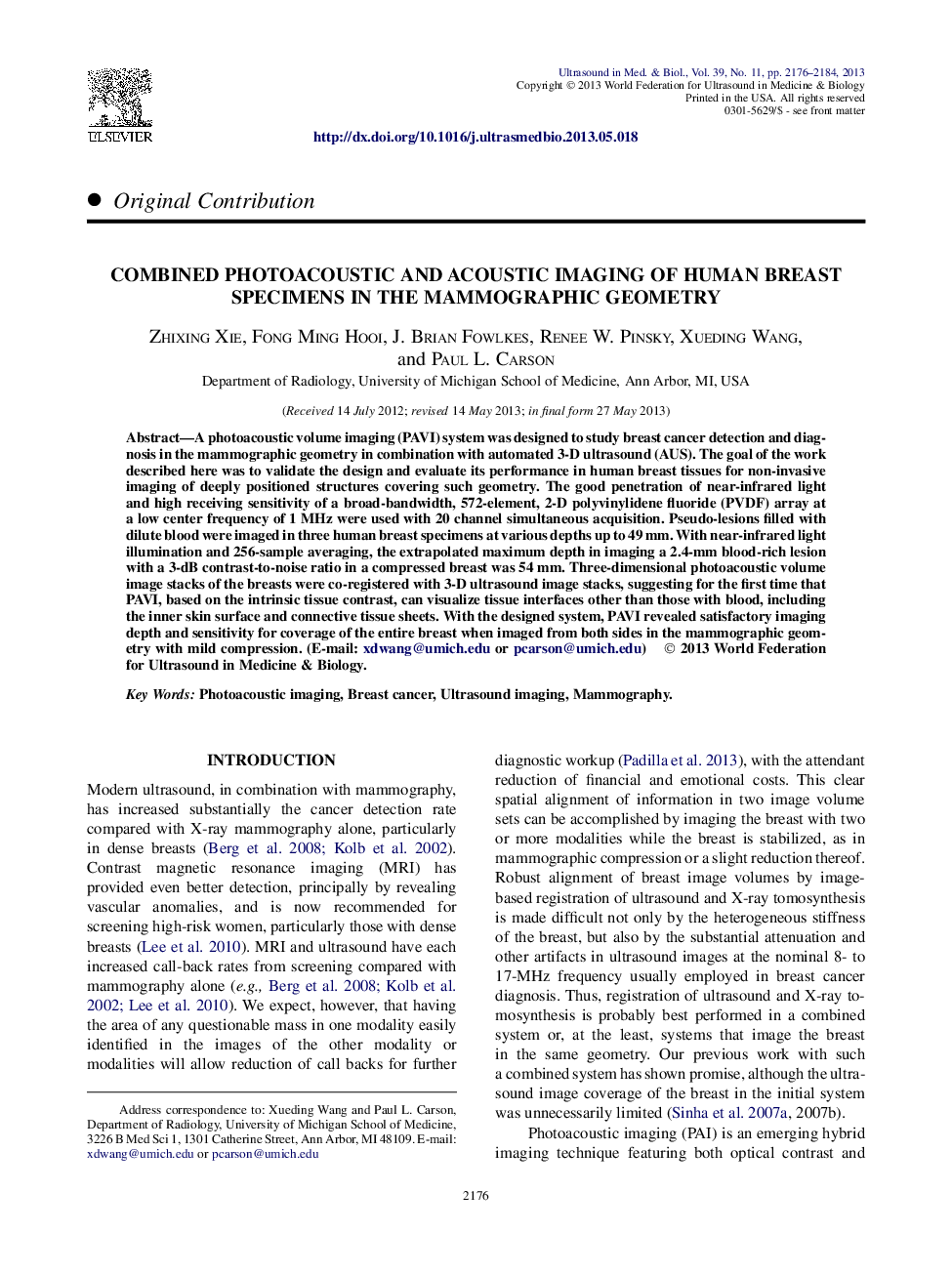| Article ID | Journal | Published Year | Pages | File Type |
|---|---|---|---|---|
| 10691919 | Ultrasound in Medicine & Biology | 2013 | 9 Pages |
Abstract
A photoacoustic volume imaging (PAVI) system was designed to study breast cancer detection and diagnosis in the mammographic geometry in combination with automated 3-D ultrasound (AUS). The goal of the work described here was to validate the design and evaluate its performance in human breast tissues for non-invasive imaging of deeply positioned structures covering such geometry. The good penetration of near-infrared light and high receiving sensitivity of a broad-bandwidth, 572-element, 2-D polyvinylidene fluoride (PVDF) array at a low center frequency of 1Â MHz were used with 20 channel simultaneous acquisition. Pseudo-lesions filled with dilute blood were imaged in three human breast specimens at various depths up to 49Â mm. With near-infrared light illumination and 256-sample averaging, the extrapolated maximum depth in imaging a 2.4-mm blood-rich lesion with a 3-dB contrast-to-noise ratio in a compressed breast was 54Â mm. Three-dimensional photoacoustic volume image stacks of the breasts were co-registered with 3-D ultrasound image stacks, suggesting for the first time that PAVI, based on the intrinsic tissue contrast, can visualize tissue interfaces other than those with blood, including the inner skin surface and connective tissue sheets. With the designed system, PAVI revealed satisfactory imaging depth and sensitivity for coverage of the entire breast when imaged from both sides in the mammographic geometry with mild compression.
Related Topics
Physical Sciences and Engineering
Physics and Astronomy
Acoustics and Ultrasonics
Authors
Zhixing Xie, Fong Ming Hooi, J. Brian Fowlkes, Renee W. Pinsky, Xueding Wang, Paul L. Carson,
